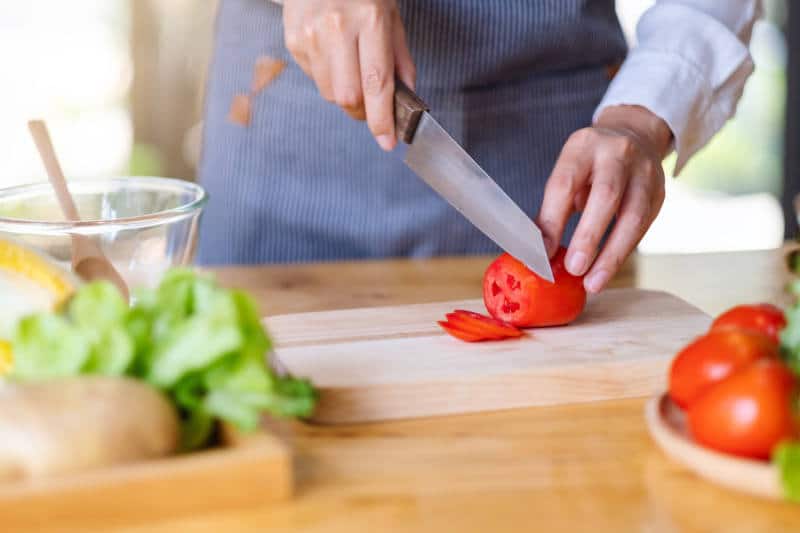Chef knives can be brought on a plane. If they couldn’t, quite a few people would be in trouble. It isn’t unheard of for guest chefs to take over duties at famous restaurants when their own head kitchen staff have to dip out for a period of time.
But if you want to bring any blade into the air, it has to be done properly.
This article will look at how you can safely (and legally) bring your chef knives on a plane, whether domestic or international.

Can I Bring My Chef Knives On a Plane?
The simple answer is: yes, you can bring your chef knives and most other knives on a plane. But you aren’t going to be setting up a hibachi station in coach; all blades must be properly stored.
And like all things, the TSA is very particular about how you do it.
If you are bringing them out of the United States, you are required to store them in a checked bag. It doesn’t matter how much they cost or how worried you are about them being jostled around a freezing cold cargo hold.
You will never be allowed to bring knives of any kind into a carry-on bag in the main area of the plane.
Of course, this causes a bit of frustration for those who like to baby their knives. In turbulence, a blade – especially a ceramic blade – could get scratched or chipped. Even high-quality chef knives might not be immune to this.
The good news is there are ways you can properly protect your equipment before heading to the airport. Most of them are actually required to get your blades checked in the first place.
Protect Your Chef Knives On a Plane (And Meet Flight Requirements)
Want to know something interesting? Plasticware, such as plastic butter knives, is technically allowed on flights within the US. But they could still get you questioned if the TSA agent decides they don’t like the look of you.
On the other hand, giant carving knives are fine for checked bags without raising an eyebrow, as long as you follow a few simple rules. These requirements also work to protect your blades from getting damaged while in the cargo hold.
Here are these simple rules and a few extra tips:
- All knives must be placed within a sheath. While it isn’t required, it is better to use a sheath with an external strap or system to keep the knife firmly in place. This will keep it from getting dislodged in all the movement between security to your destination.
- Place all knives in an additional container. Your knives shouldn’t just be sheathed, but those should then be placed into a container, as well. It can be a hard or soft case, as long as it protects the TSA and any other security from accidentally slicing themselves during an inspection.
- Fill in spaces between the knives and the edge of the cases. You don’t want your chef knives rattling around in their case. Use rags, newspaper, or anything else you can think of to keep your knives from shifting during movement in the case itself.
- Clearly label the knife case. This isn’t a requirement, but it is going to save you time and grief in the security line. Just put a label on the case stating it is a set of chef knives and let security know they have been properly secured. They will still check, but it means they will be more careful. It also shows that you are responsible.
- Bring a sharpener with you. It will need to also be secured with your chef knives, but having a sharpener when you travel is a must. That sheath is likely going to dull the blade a bit. The last thing you want is to arrive at your destination only to find you can’t properly chop, dice or slice. Be proactive!
Final Thoughts
It doesn’t take a lot to protect your chef knives and get them onto a plane. But you want to make sure not to miss any steps.
The above tips and products make is nice and easy. Don’t get stopped by the TSA!

Brianna is a self-published author with a passion for sharing her knowledge and expertise on a variety of topics with people who are looking to find the perfect items for their needs. She loves making sure that the right kind of informative content is available to people looking for quality products of all kinds. She is an avid horseback rider and reader when she is not writing.
Follow her on Facebook or Personal Blog.